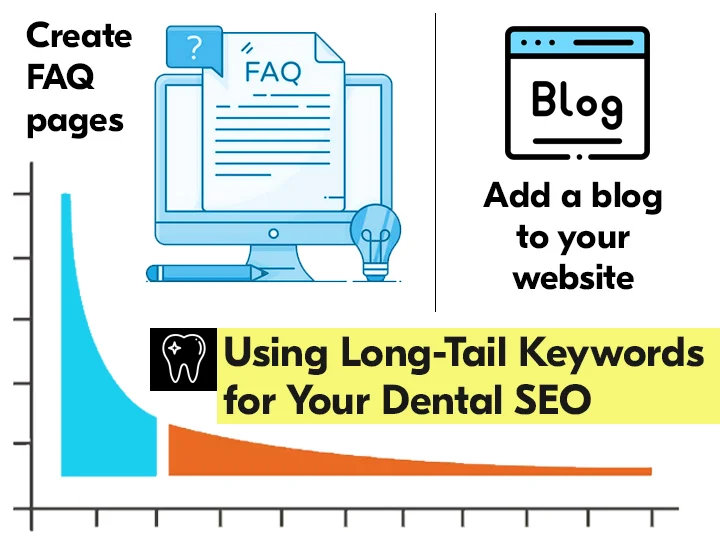 Many people that are experts in dental SEO will tell you about their interest in the keywords. You need to create and maintain a relationship with these keywords. The log-tail keywords can be targeted and prioritized to become useful drivers of traffic for both PPC and dental SEO campaigns. The long-tail keywords are more specific and longer. But they are also less common. However, these keywords add up to account for most of the traffic driven by searches.
Many people that are experts in dental SEO will tell you about their interest in the keywords. You need to create and maintain a relationship with these keywords. The log-tail keywords can be targeted and prioritized to become useful drivers of traffic for both PPC and dental SEO campaigns. The long-tail keywords are more specific and longer. But they are also less common. However, these keywords add up to account for most of the traffic driven by searches.
Identifying the long-tail keywords
It is a lot simpler to guess or find the head terms. You may use online tools such as Google AdWords for identifying hundreds of keywords from a single term. You need to use common sense here. Do not just add up all the keywords suggested. Your keywords have to be focused on for the organic search. There are other tools available out there that help identify long-tail keywords. Google Trends, WordStream are some of these tools. They allow you to see the popular searches, providing insight into the search behavior. Apart from this, if you have Google Analytics, you can get an insight into the searches that are bringing up the website.
How to target the long-tail keywords?
- Many times, the long-tail keyword searches are in the form of questions. None of us are likely to consult a dictionary for answering intricate and complicated queries. For instance, “What will happen to the tooth after insertion of a dental implant?” Most dental practices will try to garner web traffic from both head terms and long-tail keywords.
- Several trends out there are indicating a rise in long-tail search terms. People use Google and other search engines similar to a living person. They ask natural questions rather than none-specific and short terms. The search engines respond by giving relevant answers to the queries from the websites that are offering the closest answers. This trend has been accelerated by voice-activated searches and mobile searches as well.
- A person that is searching for answers about what will happen to his tooth after a dental implant is quite likely to go further in his decisions. This is more likely to happen than a person searching for a dentist in New York. In most cases, you are certain about what the person is looking for. Due to this reason looking for and tracking the long-tail keywords is revealing.
- Generally speaking, the long-tail keywords are less competitive, and yet they can be extremely lucrative. Some people concentrate on the same keywords used by their competitors. However, this way, you may miss out on the benefits of altering the target audience. Some searches may not be searched often but are more likely to get converted into dental treatment cases.
Optimizing for the Long-tail keywords
For identifying the long-tail keywords, take into consideration your dental patients and the types of questions they will ask while consulting for a specific treatment. Make sure that the content on your website is optimized to answer these queries and get a ranking for your website as well. There are several ways to do this by using your content such as,
- Creating FAQ pages.
- Creating headings of the queries on the treatment pages and answering them with unique content.
- Developing a “Ask the dentist” page. Here you can answer the questions asked by the patients through a contact form. You can update it in case you get more queries.
- Add a blog to your website and provide regular updates about various dental practice-related topics.
In the end, you must create content by keeping your patients in mind. These patients are the ones who are performing the search and are looking out for answers. If your dental practice is based out of Jacksonville, FL area, you can use the experienced and expert services of Local SEO Jacksonville. They can optimize your website for dental SEO and long-tail keywords.









Leave a Reply